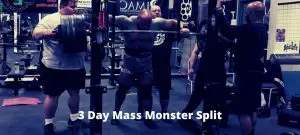
Cutty’s Comprehensive Guide on How to Lose Weight in Your Face
If you’ve ever accidentally caught your reflection in your phone and noticed your face is fatter than before, you aren’t alone.
With everything going on right now, it can be hard to not stress eat or take out our emotions on a pizza.
The great thing is, this guide is going to go over everything you need to know about losing weight in your face. From nutrition tips to exercise tips, I’m going to give you the tools to get the slimmer face you want.
It’s important to learn what causes us to get a fatter face.
Unfortunately, a fatter face is a sign of adding a few extra pounds to your body. Fortunately, our face starts to slim up faster than our whole body will.
Losing weight is difficult, and keeping it off is even harder. Taking the first step towards a healthier you is the hardest.
So let’s get started on this guide. All resource links can be found at the end of this article.
How to Lose Weight in Your Face
How Long Does it Take to Lose Face Fat?
Your Diet Matters
I don’t know how else to word things other than “you need to control what you eat.” I have fought my whole life with binge eating, sneak eating, and general avoidance of eating around others. I’ve lost, gained, and lost more weight than most of you will ever need to.
I’m not proud that I’ve gained and lost more weight than some people even weigh, but I come bearing information that actually works. The only reason I gain weight is when I stray from these easy, actionable information about nutrition and lifting weights.

The information below is backed by science and won’t be the “do facial exercises and drink more water” type of article.
I’m giving you the tools to lose fat in your face and most importantly, live a healthier lifestyle. It’s not impossible.
What is Bloating?
If you didn’t know, when your face looks puffy, your body is retaining extra water.
Generally, our body will retain the most water as a result of eating or drinking too much. If you indulged a little hard on the booze or managed to crank down a whole pizza while gaming, your body is going to retain a bit of extra water along with whatever weight you’ve gained from overeating.
If you eat reasonably and have control with your indulgences, you won’t notice drastic fluctuations in weight.
Drink More Water
Would you believe me if I told you that drinking enough water helps control how much water your body holds onto?
Multiple studies have shown a strong correlation between how much water you drink and how you maintain your weight. Many participants in a 2008 study responded to their hunger or thirst cues 62% of the time. Meaning when a participant was thirsty, they felt they needed to eat.
When you get dehydrated, your body will hold onto any extra water it can to make up for a lack of incoming water. I shouldn’t have to tell you how important water is to everything we do — from kidney function to how well our muscles fire. You probably need to drink more.
Your urine can give you an idea on your hydration levels. If you are well-hydrated, you should have a near-clear or light colored urine. Your urine becomes more yellow and darker the more dehydrated you are.
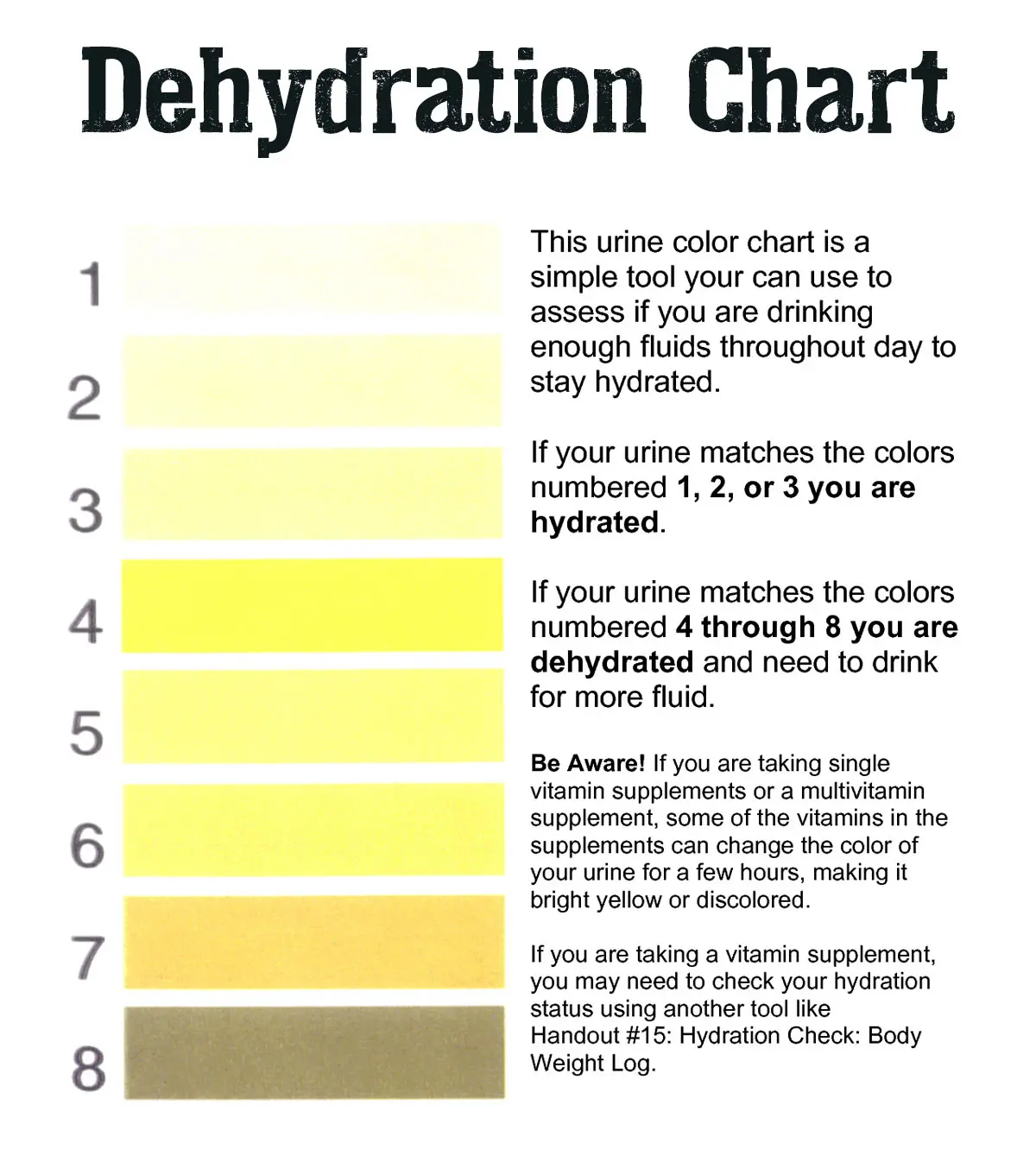


Drinking plenty of water allows excess water and sodium to be flushed out of your system. A general rule of thumb is an adult should drink around 2 liters of water a day. Replace your sodas and sugary drinks with water.
Limit Your Alcohol Consumption
There’s nothing wrong with a well-deserved party weekend, but going overboard is a recipe for weight gain and bloating. If you like to knock a few cold ones back, limiting your alcohol intake can help reduce weight gain or bloating.
Alcohol processes in your body differently and can take longer for your body to eliminate, so don’t be surprised if you look bloated a couple of days after drinking.
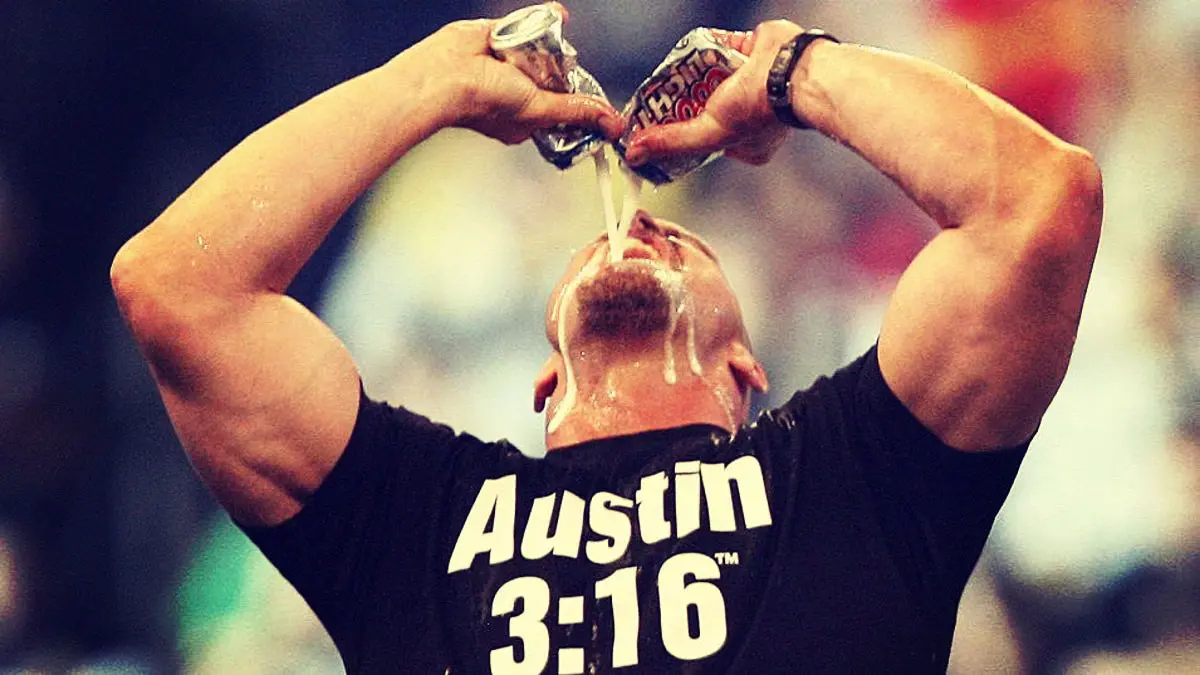


Cut Back on the Carbs
First of all, some carbohydrates are good. Others are less good, but really bad if you eat them without any control.
Carbohydrates are processed into glucose which is converted into energy used to support physical activity and our everyday bodily functions.
Carbohydrates are one of three macronutrients. The other two are fat and protein.
There are three main categories of dietary carbohydrates:
- Fiber – Humans can’t digest fiber, but the bacteria in your digestive system makes use of some of them. Fiber is important and something we touch on later.
- Starches – These are long chains of glucose molecules that slowly get broken down into glucose.
- Sugars – The sweet, short-chain carbs found in many foods. This includes sucrose, fructose, and glucose.
Carbs are broken down and transformed into glucose, then it gets used as energy or stored as fat for later use. Fiber feeds the friendly bacteria in our digestive system and can even produce fatty acids some of our cells can use for energy.
Refined Versus Whole Carbohydrates
Some people refer to carbs as simple vs complex or whole vs refined. Whole carbohydrates are unprocessed and contain the fiber naturally found in the food.
As you guessed, refined carbs have been processed, and that natural fiber is removed or changed. There are plenty of studies that demonstrate how refined carbohydrate consumption is associated with type 2 diabetes and being overweight.
The trick is to make healthier choices.
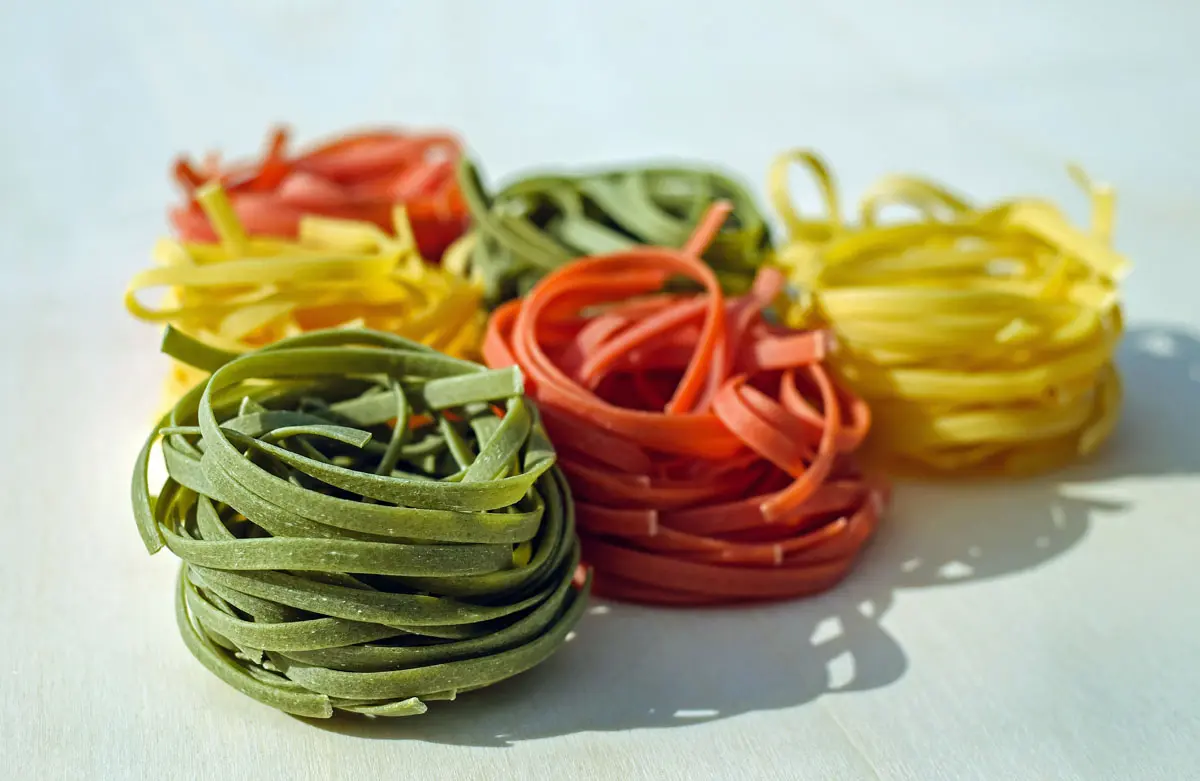


Recommended Complex Carbohydrates:
- Fruit – apples, pears, bananas, citrus fruit, berries
- Vegetables
- Legumes
- Lentils
- Black beans
- Kidney beans
- Green peas
- Oats
- Barley
- Chickpeas
- Potatoes
- Sweet potatoes
- Whole grains
- Whole wheat bread
- Whole wheat pasta
- Brown rice
- Farro
- Nuts
Refined Carbohydrates:
- Sodas and other sugar-sweetened drinks
- White bread
- Donuts
- Items from white flour
- Pretty much anything that tastes great
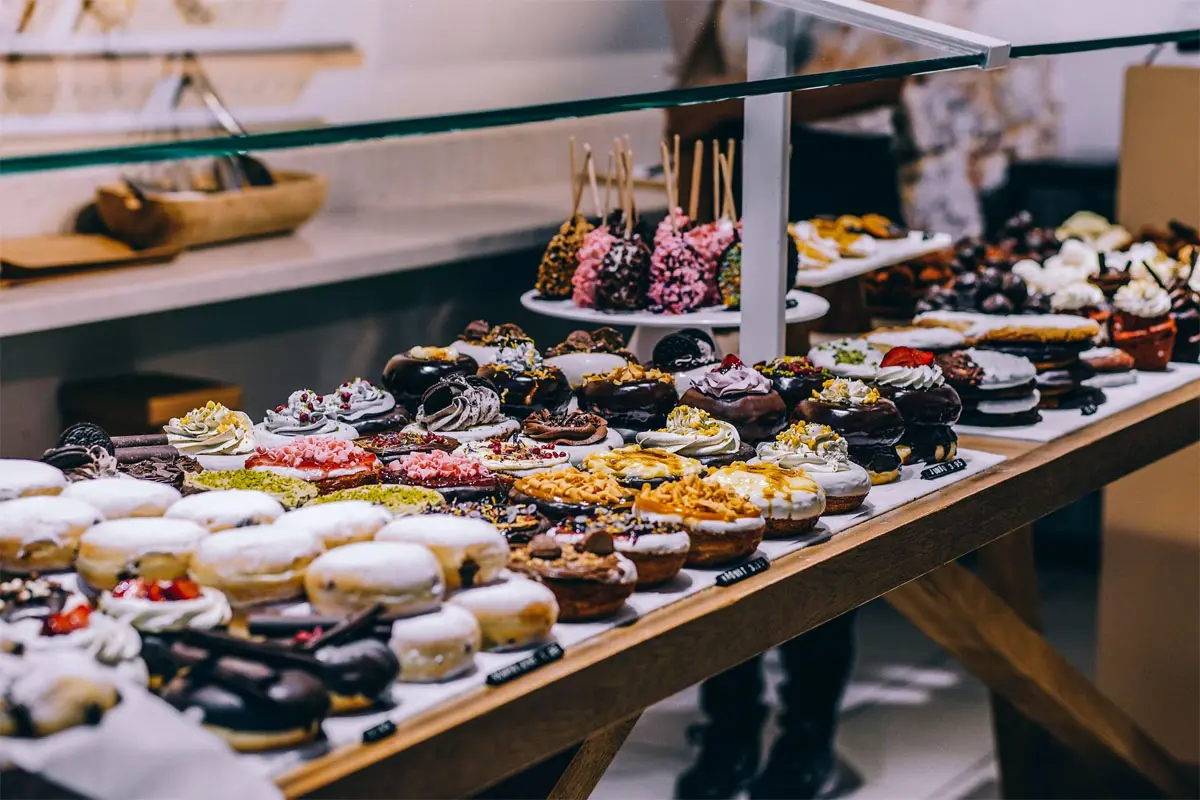


Come on, you know what’s bad and what isn’t.
Start logging your food and hold yourself accountable.
Let’s do this.
Eat More Fiber
A review of more than 60 studies showed that the more soluble fiber may reduce body weight even without restricting caloric intake. Soluble fiber forms a gel when mixed with water.
Fiber is awesome because it helps you feel fuller longer. It’s found in fruits, vegetables, nuts, whole grains, legumes, and seeds, and they help you keep a regular poop schedule.
Constipation can cause you to bloat, so try to eat around 25 to 38 grams of fiber a day.
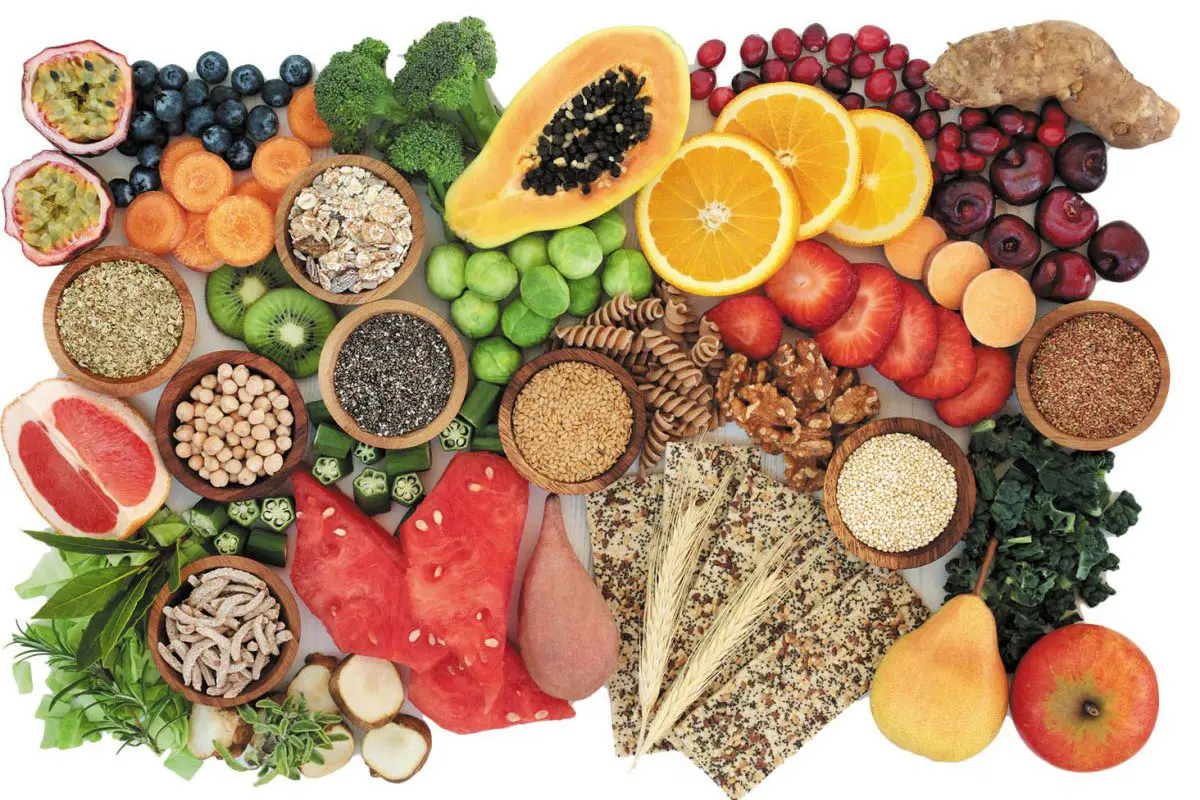


High Fiber Foods to Try
- Popcorn
- Dark chocolate
- Almonds
- Oats
- Pears
- Chia seeds
- Quinoa
- Avocado – the nutritious fats also keep you fuller longer
- Sweet potatoes
- Strawberries
- Apples
- Raspberries
- Bananas
- Broccoli
- Carrots
- Beets
- Artichoke
- Brussels sprouts
- Lentils
- Kidney beans
- Split peas
- Chickpeas
When you eat a well-rounded diet, you are covering all of your nutritional needs. You won’t have to worry about getting enough vitamins and minerals when you eat a variety of foods.
Try Foods High in Potassium
A mineral most of us don’t get enough of, potassium is found in some foods — many of them you should be eating.
Potassium is an electrolyte and mineral that helps muscles work. This includes the muscles that control your breathing and heartbeat.
Lastly, and probably the most important, is potassium helps move nutrients into cells and waste and excess water out.
High Potassium Foods
- Fish
- Beans
- Potatoes
- Bananas
- Oranges
- Apricots
- Honeydew
- Cantaloupe
- Prunes
- Raisins
- Dates
- Cooked spinach
- Cheese
- Poultry
- Nuts
- Mushrooms
- Cucumbers
So far, I can make over 100 dishes with the foods I’ve listed here. Endless tastes, maximum nutrition. Eating healthy isn’t eating salads every day, it’s eating a variety of fresh foods.
Instead of chicken and rice, add some sauteed onions, bell peppers, mushrooms, and garlic. Try other veggies and see what you come up with. This adds loads of nutrition, will fill your belly up, and you’ll actually want to eat it.



Watch Your Sodium Intake
The FDA recommends limiting sodium intake to less than 2,300mg per day. Americans, on average, eat around 3,400mg of sodium per day.
Everyone screams to “watch your sodium” and it has killed having any flavor on your food… and it honestly pisses me off. Here’s why.
You see, you have people who when they do cook will make the blandest, unenjoyable piece of chicken.
“Don’t want to use salt” is the mindset.
The next day they go to McDonald’s and eat a BigMac and a large fry and have 1,410mg of sodium in one meal.
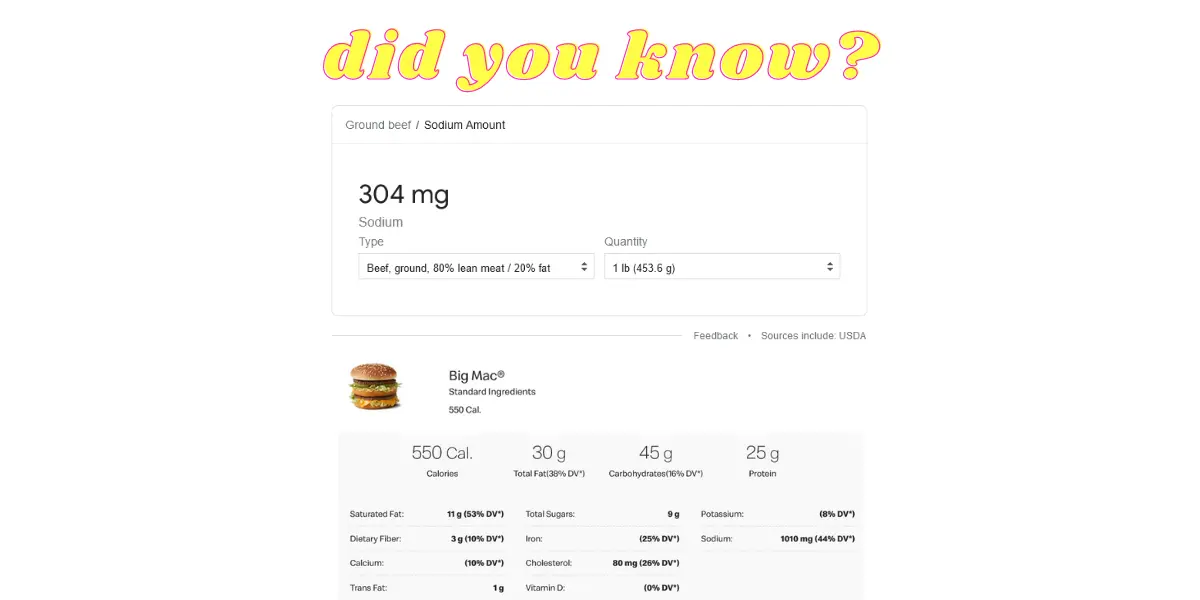


A pound of ground beef calorie-wise is much higher, but its sodium is low compared to the sandwich. Instead of skipping seasoning your food, quit eating highly-processed foods. If you learn how to cook, you will essentially unlock unlimited flavors while eating healthy.
Eating healthy doesn’t have to taste horrible. If your meals come from whole foods, you will lose face fat and you will get healthier.
Lose Face Fat With Exercise
Just as eating healthier can help you lose face fat, exercising can also help due to its weight loss benefits. Performing a cardio and weight training routine while improving your diet can drastically change your appearance.
As your weight changes, your face is one of the first things to change — getting fatter if you gain weight, or thinner if you lose weight. Dropping as little as three to five pounds will show up on your face first.



Do Facial Exercises Work?
Facial exercises are such an internet fad. You can’t target fat loss, and you can’t roll a tool on your face to magically lose fat.
Quit looking for the shortcut that doesn’t exist.
Oh, and the whole “lay a warm towel over your face to melt fat away” is also a crock of crap.
Don’t listen to the hype and start making actual changes in your life.
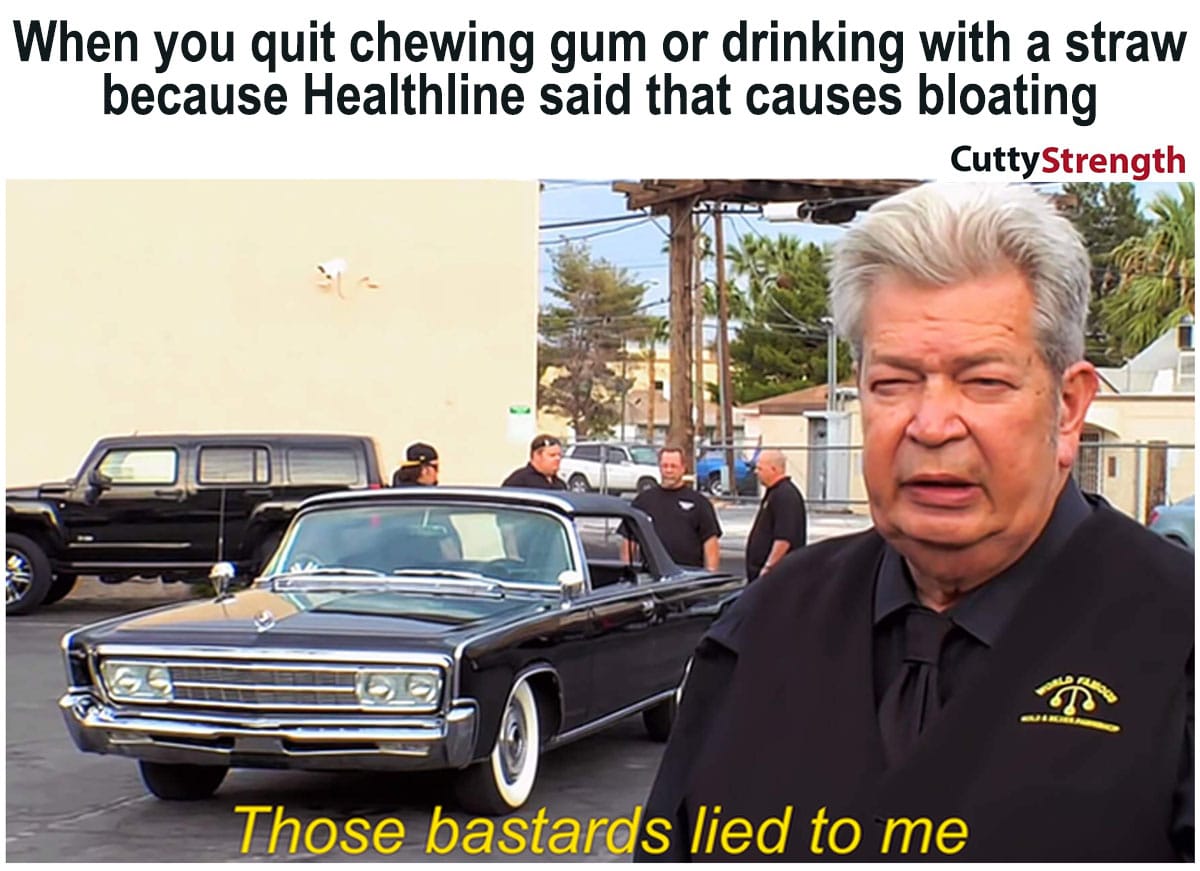


Exercise Suggestions
You don’t have to go to a gym and lift weights to lose weight in your face — simply going for a 30-minute walk every day can help. If you start seeing your face slim down, that’s a sign that you are improving your health and losing body fat.
The CDC recommends at least 150 minutes of moderate-intensity exercise per week, which is about 30 minutes a day, 5 days a week. You don’t have to exercise all 30 minutes at one time — break it down into smaller chunks throughout the day. If you’re up for it, you could perform 75 minutes of vigorous activity every week.
Exercise in the Gym
The gym can be a great place with a variety of machines, plenty of weights, and an atmosphere to keep you focused. Performing aerobic exercise, lifting weights, and eating nutritious foods will be the combination guaranteed to help you lose face fat.
Exercise at Home
If you want to exercise at home or outdoors, there are plenty of ways to burn calories and get fit.
here are plenty of healthy activities that can help you lose weight at home that including bodyweight exercises and workouts with minimal equipment.
Say Hello to High-Intensity Interval Training
If you’re looking for a way to get healthy, burn some fat, and not spend your whole day doing it, a high-intensity interval training routine may be for you. If you are short on time, a HIIT workout can burn more calories than a steady-state cardio session of the same length.
According to the U.S. Department of Health and Human Services, getting two and a half to five hours of moderate-intensity exercise or 80 minutes to two and a half hours of high-intensity exercise will yield a substantial change in your weight.
Check Your Stress at the Door
Stress creates cortisol and can lead to weight gain. As I mentioned earlier, weight fluctuation shows in your face much faster than throughout your body.
Cortisol is naturally produced by your body and it is created by adrenal glands in our kidneys. Cortisol is released when under stress, which sends our body into a “fight or flight” mode. This temporarily pauses normal bodily functions and slows your metabolism.
Cortisol is a hormone that is essential to survive but can be detrimental to your health in excess amounts.
Studies suggest that excess cortisol can slow testosterone production, which can lead to a decrease in muscle mass as well as your metabolism. Cortisol has been shown to increase the “toxic fat,” or visceral fat, which can be attributed to the development of cardiovascular disease.
You have to get the stress levels down.
Practice some form of meditation, mindfulness, yoga, or deep breathing. Try an adult coloring book. Go for a quiet walk or hike. You have to find an outlet for your stress or it will quite literally kill you. Exercise has been shown to lower stress levels, improve cortisol levels, and can give you an overall sense of well-being.
It’s not all mumbo-jumbo.
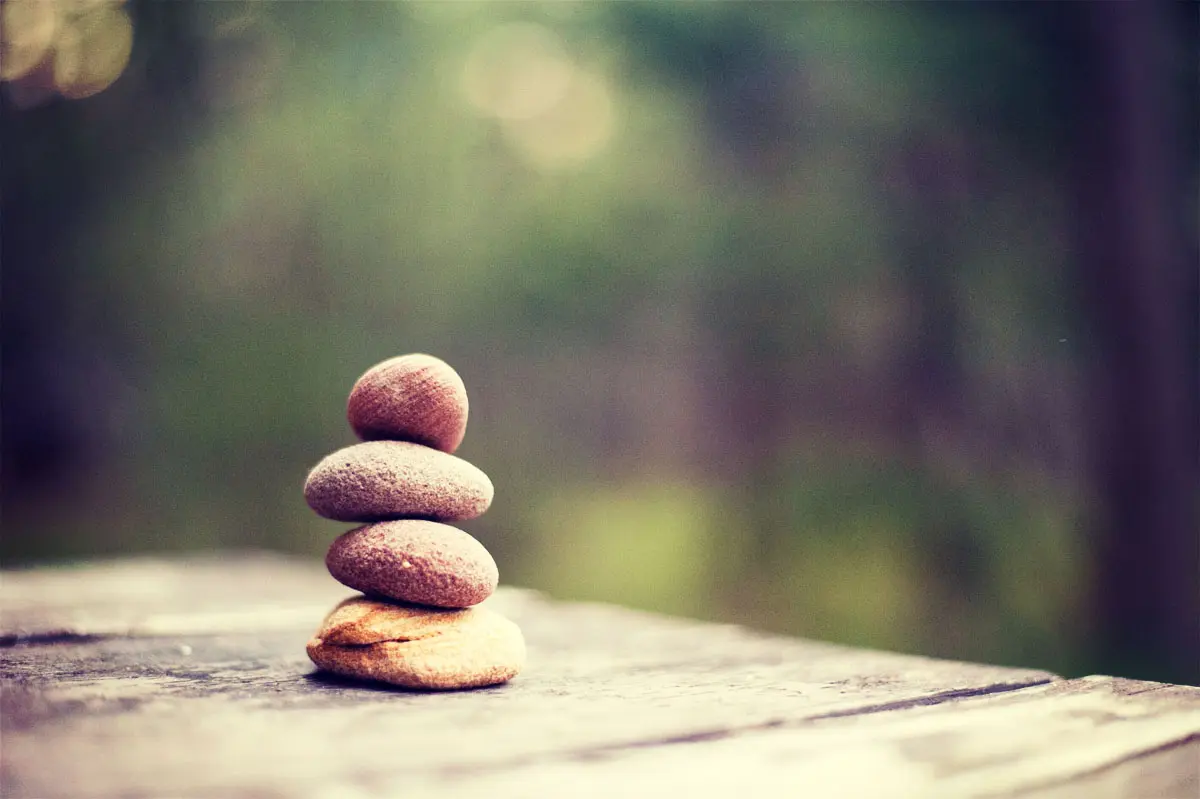


Sleep is Crucial
Along with eating better and moving more, getting enough sleep will do wonders for your overall health. A study that was published in the journal Sleep found that sleep deprivation leads to darker under-eye circles, red eyes, and puffier skin. What’s worse, according to the American Academy of Sleep Medicine, around 30% of American adults don’t get enough sleep.
A study performed in 2017 suggests staying up late can cause mindless eating and not getting enough sleep can wreck your hormones. As your body tries to cope with being sleep deprived, it will produce higher levels of cortisol.
5 Tips to Get a Better Night’s Sleep
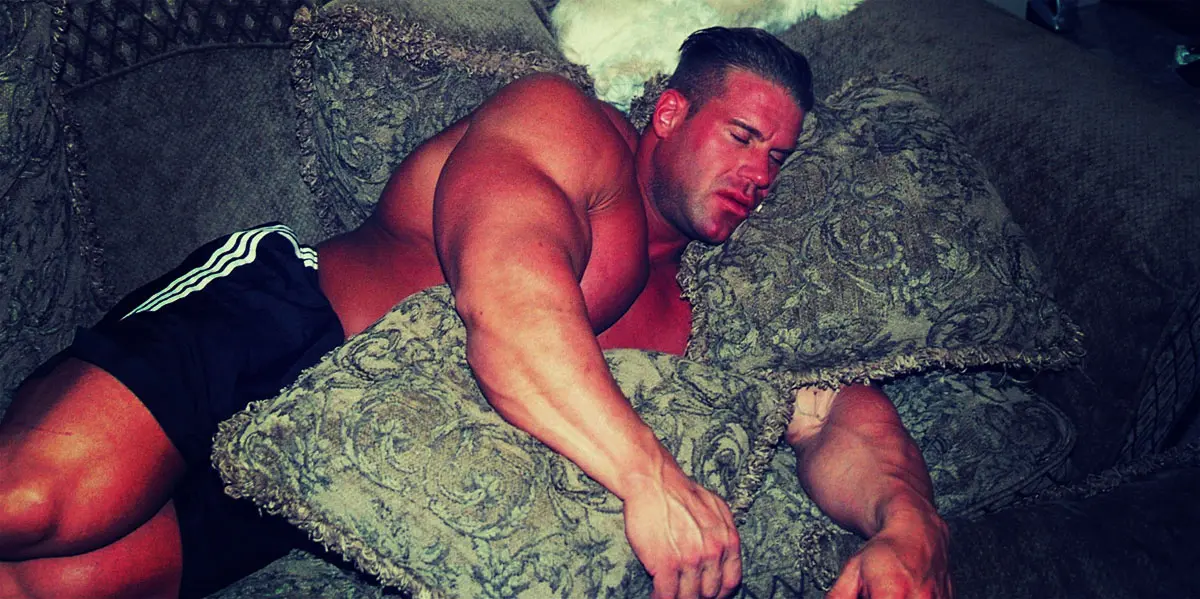


1.) Lay off the Screen Time
The artificial “blue” light emitted by screens on our televisions, computers, and phones all disrupt your body’s natural circadian rhythm. The light stimulates daytime hormones. Many phones have a blue-light blocking feature, or I recommend some blue-light blocking glasses.
Sitting in bed on your phone or watching TV before bed screws up your sleep. Try to turn them off 30 minutes before you are ready for bed.
2.) Minimize Disturbances
You can’t help if a dog barking outside, but you can drown out most noises with a fan, a white noise machine, or other sounds that help you sleep.
I love using my Google Home to play relaxing outdoorsy cricket ambient noise and sleeping like a log.
3.) Temperature and Darkness is Key
A dark and cool bedroom will help you sleep. Studies suggest to keep your bedroom temperature between 60 and 75°F, but experiment to find what temperature works best for you.
If you live in an area that is well-lit at night, buying some heavy curtains or blackout shades can help. Try to eliminate any lights from your phone charging, your PC, or any surge protectors that light up your room like Christmas.
Another study suggests that heat exposure increases wakefulness and decreases slow wave sleep and rapid eye movement sleep due to thermoregulation. Further studies are needed to consider the effect of cold exposure on sleep and other physiological parameters.
Your body naturally cools off when it is ready for sleep, so keep the room cool, get under some comfy blankets, and enjoy a restful night’s sleep.
4.) Invest in a Nice Mattress and Pillows
I spent half of my adult life sleeping on a couch or futon — waking up daily to lower back pain, kinks in my neck, and often still tired.
Invest in your health and buy a mattress and pillows that are comfortable. Check out the Sleep Foundation’s recommendations on choosing the best pillow.
The amount and quality of sleep you get will drastically improve your quality of life. From minimizing cravings, improved mood, better complexion, and of course, a less-bloated face.
5.) Stick to a Schedule
Your circadian rhythm is your natural internal process that regulates your sleep and wake cycles. Studies suggest that disruption of this rhythm can lead to weight gain, slower thinking, impulsivity, and other physiological and behavioral changes. Similar to someone with jet lag or has the luxury of working shift work.
Try to go to bed and wake up at the same time every day. Your early alarms may suck for a while, but eventually, you will wake up naturally at that time.
Bonus Tip
Falling asleep can be hard, but masturbation or sex before bed can help you fall asleep and stay asleep.
https://www.youtube.com/watch?v=GJNxNUi6BmA
Wrapping Up
Eating healthier, getting some exercise, and living a healthy well-rounded lifestyle gives you a thinner face, more radiant looking skin, and give you more control over your urges.
Losing weight in your face can be achieved by losing weight.
An ounce of prevention can go a long way. That is, making the lifestyle choices you know you need to make. If you do not want to have a fat face, lose weight. If you don’t want your body weight to drastically fluctuate, making you look pudgy in places you shouldn’t… eat nutritious foods.
There’s no shortcut to achieving and maintaining your ideal body.
Period.
Resources
For all of you that like the science behind my articles, check out these studies.
Food
- https://pubmed.ncbi.nlm.nih.gov/31897475/
- http://doi.org/10.1038/oby.2008.409
- https://www.ncbi.nlm.nih.gov/pmc/articles/PMC2467458/
- http://doi.org/10.3945/ajcn.117.161588
- https://www.ncbi.nlm.nih.gov/pmc/articles/PMC5912158/
- https://www.ncbi.nlm.nih.gov/pmc/articles/PMC7008417/
Exercise
- http://doi.org/10.1519/JSC.0000000000000661
- https://health.gov/paguidelines/second-edition/pdf/Physical_Activity_Guidelines_2nd_edition.pdf
- https://www.ncbi.nlm.nih.gov/pmc/articles/PMC5571495/
- https://www.ncbi.nlm.nih.gov/pubmed/26202452
- https://pubmed.ncbi.nlm.nih.gov/26181634/
- https://www.ncbi.nlm.nih.gov/pubmed/26181634
Sleep
- https://aasm.org/resources/factsheets/insomnia.pdf
- https://www.ncbi.nlm.nih.gov/pmc/articles/PMC4854772/
- https://www.ncbi.nlm.nih.gov/pmc/articles/PMC5223114/
- https://www.ncbi.nlm.nih.gov/pmc/articles/PMC3619301/
- https://www.ncbi.nlm.nih.gov/pmc/articles/PMC4701627/
- https://www.sciencedaily.com/releases/2009/10/091026225744.htm


